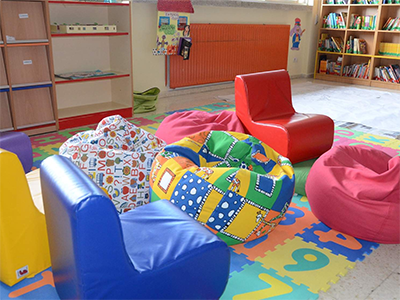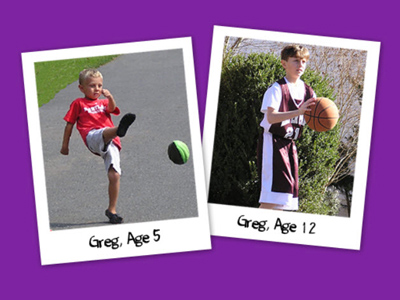 |
VAD Educational Updates for the Prehospital Care Provider |
1.00 |
Ventricular Assist Devices (VADs) are not new devices. In fact, the first successful use of such a device was described in 1966. Since then, and particularly in the past few years, VAD design and safety has improved significantly and are now commonly implanted devices.
This course strives to bring prehospital providers current with the most commonly implanted devices at the time - this course will not cover every device that a prehospital provider may encounter.
Following successful completion of the material, the provider should feel comfortable recognizing the VAD patient when encountered in the community, have an understanding of the basic VAD components, be able to assess the VAD patient's hemodynamic status, and be able to deliver care in the prehospital setting. |
 |
Basic Tech Tools for Paraprofessionals |
1.75 |
uThis course covers basic technology tools for paraprofessionals. It is just one out of many paraprofessional courses we offer. This course is designed to empower paraprofessionals and educators with essential technological skills and tools that can enhance teaching and learning in K-12 classrooms. Participants will learn how to effectively integrate various digital tools, platforms, and applications to improve instruction, communication, and organization. This course will help you develop new knowledge about students and will help you understand what your role as a paraprofessional is. |
 |
Management of Effective Preschool Child Care Environments (CDA 1) |
2.00 |
Unlocking preschool potential through nurturing environments: This course equips you with the knowledge and skills to create spaces that ignite young minds and support healthy development. Explore how to design engaging, child-centered environments and routines that adapt to individual needs, cultural influences, and developmental milestones. Learn to assess your current preschool environment and craft targeted strategies for improvement, fostering a dynamic learning space where every child thrives. |
 |
Enhancing Emotional Literacy in Children from Birth to Age 3 (CDA 3) |
2.00 |
Unlock the potential of your preschoolers! This course equips you with the Pyramid Model's and Center on the Social and Emotional Foundations for Early Learning's (CSEFEL) evidence-based strategies for nurturing their social and emotional development. Watch their confidence bloom as they build strong relationships, navigate emotions, and develop vital self-regulation skills. Invest in their school readiness and overall well-being with these powerful tools! |
 |
Developing Important and Successful Communications Skills (CDA 3) |
2.00 |
Unleash the communication superpowers of your young learners! This course equips you with age-appropriate tips to help infants, toddlers, preschoolers, and school-age children blossom. Watch their language and social-emotional skills soar as they confidently navigate transitions, engage in enriching play and learning, build meaningful relationships, and become empowered problem-solvers. |
 |
Child Abuse Prevention and Awareness |
1.25 |
Unfortunately, child abuse is a prevalent issue in today's world. Child care workers and volunteers, coaches, and others who work with children must be knowledgeable about the topic to ensure children's safety. This course will make you aware of the many issues related to child abuse and help you recognize and prevent child abuse within and outside of program walls. It offers advice about how to respond to a child who divulges abusive information and what to do with this information. As someone who works with children you will learn how to protect the child, your organization, and yourself from accusations of abuse. |
 |
Employee Performance: Resolving Conflicts |
1.50 |
Understanding the different styles of conflict resolution can help you identify the most appropriate process to use when addressing conflicts in the workplace. There are two general types of conflict resolution: indirect and direct.
In this course you will learn to: identify conflict resolution styles, resolve conflicts in the workplace, resolve team conflicts, and identify the communication skills required to resolve conflicts. |
 |
Employee Performance: Resolving Conflicts (Instructor Guide) |
1.50 |
Understanding the different styles of conflict resolution can help you identify the most appropriate process to use when addressing conflicts in the workplace. There are two general types of conflict resolution: indirect and direct.
In this course you will learn to: identify conflict resolution styles, resolve conflicts in the workplace, resolve team conflicts, and identify the communication skills required to resolve conflicts.
This Instructor's Edition of this course includes notes and suggestions to assist you in presenting the material, whether in an in-person classroom setting, or as an instructor-led online or distance-learning course. It also provides you with the answers to questions found in mid-lesson activities, as well as in the quiz that concludes the course. |
 |
Exploring the Continuum of Developmental Tasks of Children in Grades K-6 for Paraprofessionals |
1.00 |
Understanding the continuum of ongoing development during the school age years provides the foundation for planning and implementing successful strategies and ideas as a paraprofessional. When staff know and understand the developmental tasks of students in Kindergarten through 6th grade, they can work with colleagues to design effective environments, plan engaging activities, set appropriate expectations and limits, and guide children’s behavior effectively. Training all staff members on the foundations of child development, no matter their role in the school, is a vital part of student success. |
 |
Course 01: Exploring the Continuum of Developmental Tasks of School-Age Children from 5 to 12 |
2.00 |
Understanding the continuum of ongoing development between the ages of 5 and 12 provides the foundation for planning and implementing successful school-age programs. When staff know and understand the developmental tasks of school-age children, they can work with children and colleagues to design effective environments, plan engaging activities, set appropriate expectations and limits, and guide children’s behavior effectively. |











